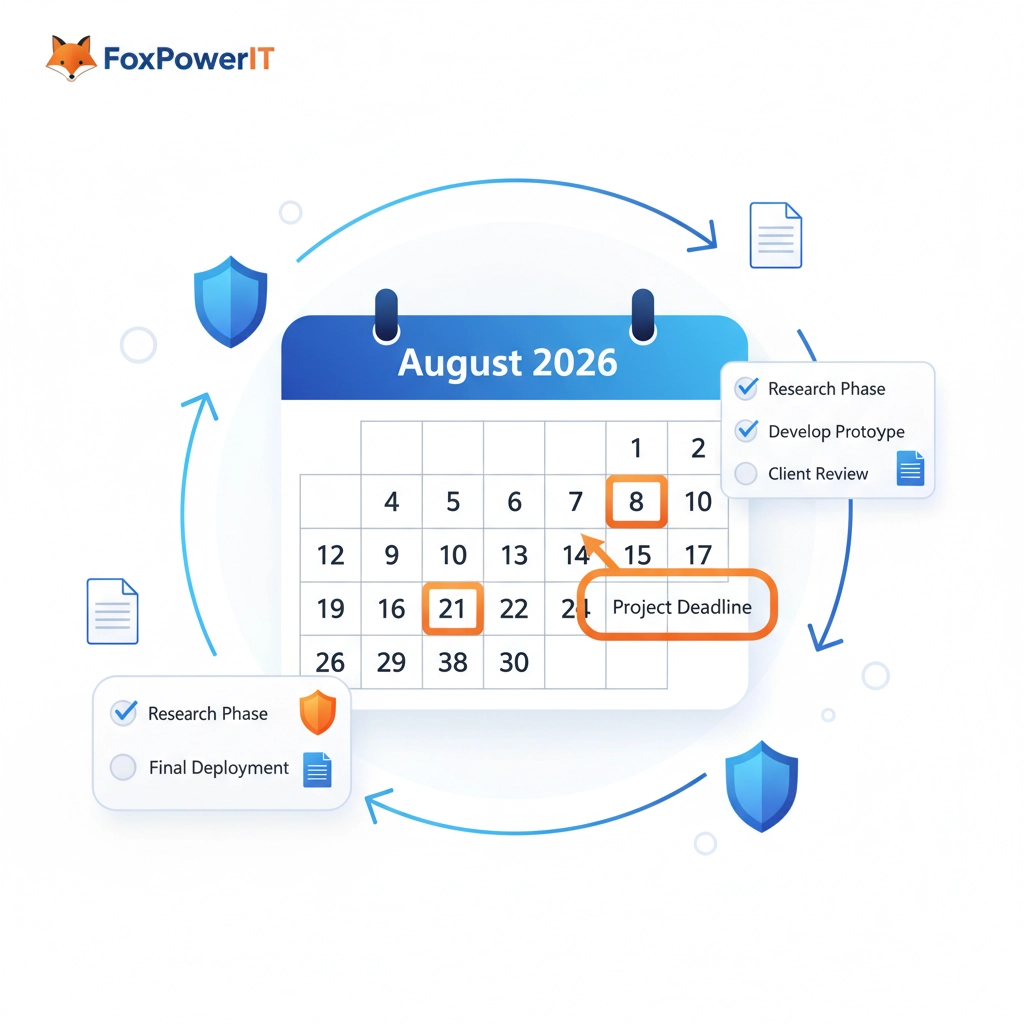Picture this: You're running a successful Connecticut business, processing customer data every day like thousands of other SMBs across the state. Then July 2026 hits, and suddenly your company falls under one of the strictest privacy laws in the country. The thresholds have plummeted, the requirements have expanded, and the compliance mistakes that seemed minor yesterday could now trigger significant penalties.
This isn't a hypothetical scenario: it's exactly what's happening to Connecticut businesses right now.
Senate Bill 1295, signed by Governor Ned Lamont on June 24, 2025, represents one of the most aggressive expansions of state privacy law we've ever seen. The amended Connecticut Data Privacy Act (CDPA) doesn't just tweak a few requirements: it completely reshapes who must comply and what they must do. If you think your business is too small to worry about privacy compliance, you're likely making the first critical mistake.
The New Reality: Dramatically Lower Thresholds Change Everything
The most shocking change isn't buried in legal jargon: it's right at the surface. The CDPA previously applied only to companies processing data from at least 100,000 individuals or 25,000 individuals with revenue from data sales. Those thresholds just got slashed to 35,000 individuals.
But here's where it gets really interesting: The law now creates an entirely new trigger that catches businesses completely off guard. If your company processes any sensitive data (excluding payment transactions) or sells personal data from even one individual, you must comply with the full CDPA requirements.

Think about what this means for your business. That customer database you've been building? Those employee records with health information? The marketing lists you occasionally share with partners? If you're processing sensitive data or selling any personal information: regardless of volume: you're now subject to comprehensive privacy compliance requirements starting July 1, 2026.
This expansion moves Connecticut from middle-of-the-pack to among the strictest privacy jurisdictions in the country. The question isn't whether this affects your business: it's whether you'll be ready in time.
Mistake #1: Misunderstanding What Counts as "Sensitive Data" Under the New Rules
The expanded definition of sensitive data is where most businesses will get caught off guard. The amended CDPA significantly broadens what counts as sensitive information, and processing any of these data types now triggers full compliance requirements.
The new sensitive data categories include:
- Disability status or treatment information
- Status as nonbinary or transgender
- Neural data
- Genetic or biometric data (with the critical phrase "for the purpose of uniquely identifying an individual" removed)
- Information derived from genetic or biometric data
- Certain financial information
- Government identification numbers
The removal of the "uniquely identifying" qualifier for biometric data is particularly significant. Previously, only biometric data used for identification purposes counted as sensitive. Now, any biometric data collection: from facial recognition for security cameras to fingerprint time clocks: potentially triggers CDPA compliance.
Many Connecticut businesses use biometric timekeeping systems, security cameras with facial recognition, or health monitoring devices without realizing they're now processing sensitive data under the expanded definition. If you're a healthcare practice collecting patient disability information, a fitness center using biometric access controls, or a financial services firm handling government ID numbers, you've likely crossed the sensitive data threshold.
The critical mistake businesses make is conducting their compliance assessment based on the old definitions. They count customer records and conclude they're under the 35,000 threshold, not realizing that processing sensitive data from even a handful of individuals now brings them into scope.
Mistake #2: Assuming Financial Institution Exemptions Still Apply
Financial services companies that previously relied on blanket GLBA exemptions are walking into a compliance trap. The Connecticut legislature scrapped the broad exemption for all companies subject to the Gramm-Leach-Bliley Act, replacing it with much narrower protections.
The amended CDPA maintains exemptions only for:
- GLBA-covered information specifically
- Traditional financial institutions like banks, credit unions, insurers, and registered investment advisors
But here's the catch: many companies that handle financial data aren't traditional financial institutions. Mortgage brokers, financial advisors, fintech companies, payment processors, and business loan providers may have relied on GLBA exemptions without qualifying for the new entity-level protections.

If your business handles financial information but isn't a traditional bank, insurer, or registered investment advisor, you need to conduct an immediate compliance assessment. The assumption that GLBA coverage provides automatic CDPA exemption is no longer valid and represents a significant compliance risk.
This change is particularly problematic because many affected companies haven't been monitoring privacy law developments, assuming they were permanently exempt. They may lack the basic privacy infrastructure: data mapping, consent mechanisms, consumer request processes: that other businesses have been building over the past few years.
Mistake #3: Failing to Implement Data Protection Impact Assessments by August 1, 2026
While most CDPA amendments take effect July 1, 2026, data protection impact assessments (DPIAs) have a different timeline that many businesses overlook. Starting August 1, 2026, companies must conduct DPIAs for certain processing activities created or generated on or after that date.
The critical mistake is treating DPIAs as a future concern rather than an immediate operational requirement. While the assessments aren't retroactive, any new processing activities launched after August 1, 2026, require impact assessments. This means businesses need established DPIA processes, templates, and procedures ready by that date.
Companies that wait until August to think about impact assessments will find themselves scrambling to evaluate new processing activities without proper frameworks in place. The smart approach is building DPIA capabilities now, testing them on current processing activities, and having robust procedures ready for the August deadline.
The assessment requirements cover processing activities that present heightened privacy risks, including:
- Processing sensitive personal data
- Processing personal data for targeted advertising
- Processing personal data for profiling decisions with legal or significant effects
- Processing personal data for training artificial intelligence systems
Given how common these activities are in modern business operations, most companies subject to the CDPA will need regular DPIA capabilities. The businesses that build these processes early will have significant competitive advantages in launching new initiatives quickly and compliantly.
Mistake #4: Ignoring New Consumer Rights and Response Obligations
The amended CDPA modifies existing consumer rights and creates new ones that many businesses aren't prepared to handle. The new right for consumers to contest certain profiling decisions requires technical capabilities and operational procedures that most companies haven't developed.
If your business uses automated profiling for credit decisions, employment screening, insurance underwriting, or targeted advertising, you must establish mechanisms for consumers to challenge these decisions. This isn't just about providing an email address: you need documented processes for reviewing profiling logic, assessing individual challenges, and potentially reversing automated decisions.
The modified right to access personal data also creates new compliance requirements that businesses often underestimate. Updated data access request processes must comply with new specifications while maintaining the ability to respond within required timeframes.

Many companies make the mistake of viewing consumer rights as occasional inconveniences rather than regular operational requirements. In mature privacy jurisdictions, consumer requests can represent significant workloads. California businesses report receiving hundreds or thousands of privacy requests annually once consumers become aware of their rights.
Connecticut businesses should expect similar request volumes as consumer awareness grows. The companies that build efficient, automated request-handling processes now will manage this workload smoothly. Those that wait will find themselves overwhelmed by manual processes that consume significant staff time and create compliance risks.
Mistake #5: Overlooking Minor Protection Requirements
The amended CDPA includes protections for minors that many businesses ignore because they don't specifically target children. The law includes a ban on targeted advertising to minors, which applies to any business that advertises online or collects data from users under 18.
The critical mistake is assuming minor protection requirements only affect businesses in child-focused industries. If you operate a website, run social media advertising, or collect data from customers who might be under 18, you need age verification and advertising restriction capabilities.
Modern advertising platforms make it easy to accidentally target minors. Social media algorithms, programmatic advertising, and behavioral targeting systems don't automatically exclude users under 18. Businesses must actively implement age detection and advertising restriction systems to ensure compliance.
The challenge is that effective age verification while maintaining user experience is technically complex. Many businesses discover they need significant development work to implement compliant age detection systems. The companies that start this work early will have functioning systems ready by the July 2026 deadline.
Mistake #6: Mishandling Consent and Notice Obligations During Material Changes
The CDPA includes specific requirements for how businesses must handle consent when they make material changes to data processing. When controllers make material changes to how they use personal data, they must notify affected consumers about data collected after the change and provide reasonable opportunity to withdraw consent for materially different processing of previously collected data.
Controllers must take "all reasonable electronic measures" to provide this notice, considering available technology and the nature of their relationship with consumers. This creates practical challenges that many businesses underestimate.
The mistake is treating consent and notice requirements as simple email notifications. Effective compliance requires:
- Systems to detect when processing changes are "material"
- Mechanisms to identify affected consumers
- Technology to deliver notices through multiple channels
- Processes to handle consent withdrawals efficiently
- Documentation of notice attempts and delivery
Companies that handle consent changes manually will find themselves unable to scale compliance efforts effectively. Building automated consent management systems takes significant time and testing. Businesses that start this work now will have robust capabilities ready by the implementation deadline.
Mistake #7: Underestimating Implementation Timeline and Resource Requirements
The most critical mistake Connecticut businesses make is underestimating the time, effort, and resources required to achieve CDPA compliance. With most changes taking effect July 1, 2026, businesses have approximately eight months from late 2025 to build comprehensive privacy compliance programs.
Building effective privacy compliance from scratch typically requires 6-12 months of dedicated effort, including:
- Comprehensive data inventory and mapping
- Privacy policy updates and legal review
- Consumer request handling systems
- Employee training and process documentation
- Vendor assessment and contract modifications
- Technical implementation of consent management
- Testing and validation of all systems
Companies that wait until early 2026 to begin compliance efforts will find themselves rushing through critical implementation steps, increasing the risk of gaps and violations. The businesses that start now have time to build robust, well-tested compliance programs.

The resource requirements extend beyond technology. Privacy compliance requires ongoing operational commitments including:
- Designated privacy personnel or teams
- Regular compliance audits and updates
- Consumer request processing workflows
- Vendor management and due diligence
- Employee training and awareness programs
- Legal and regulatory monitoring
Many small and medium businesses make the mistake of viewing privacy compliance as a one-time project rather than an ongoing operational requirement. The companies that budget for ongoing privacy program costs will maintain compliance more effectively than those treating it as a temporary expense.
The Strategic Approach: Getting Ahead of Connecticut's Privacy Law Changes
Smart Connecticut businesses are using the privacy law changes as competitive advantages rather than compliance burdens. They're implementing privacy-by-design principles that improve customer trust, streamline data management, and reduce overall operational risks.
The strategic approach involves three phases:
Phase 1: Immediate Assessment (Now – January 2026)
Conduct comprehensive data audits to determine compliance scope under new thresholds. Many businesses discover they process more sensitive data than they realized, requiring earlier compliance timeline planning.
Phase 2: System Implementation (January – May 2026)
Build or implement privacy management systems including consent management, consumer request handling, and data protection impact assessment processes. This phase requires the most technical resources and benefits from early starts.
Phase 3: Testing and Validation (May – July 2026)
Thoroughly test all privacy systems, train employees, and validate compliance procedures before the July 1, 2026 deadline. Companies that rush this phase often discover critical gaps after implementation deadlines.
Why Professional IT Support Makes the Difference
Privacy compliance intersects with virtually every aspect of business technology: from database security to website functionality to employee systems. The businesses that successfully navigate Connecticut's privacy law changes typically work with managed IT service providers who understand both privacy requirements and technical implementation.
Professional IT teams help businesses:
- Accurately assess their compliance scope under new thresholds
- Implement privacy-by-design technical architectures
- Build automated compliance management systems
- Integrate privacy controls with existing business processes
- Maintain ongoing compliance as regulations evolve
The alternative: attempting to build privacy compliance in-house without technical expertise: often results in incomplete implementations that create significant risk exposure.
Taking Action Before July 2026
Connecticut's expanded privacy law creates significant compliance obligations for thousands of businesses that weren't previously covered. The dramatically lower thresholds, expanded sensitive data definitions, and new operational requirements mean most SMBs need comprehensive privacy programs.
The businesses that start now have time to build robust, cost-effective compliance programs. Those that wait until 2026 will find themselves rushing through critical implementations under deadline pressure.
Your first step should be an immediate assessment of whether the new thresholds bring your business into CDPA scope. Given the expanded sensitive data definitions and lowered volume thresholds, many more Connecticut businesses will need compliance programs than previously expected.
The expanded Connecticut Data Privacy Act represents both a compliance challenge and a competitive opportunity. Companies that build strong privacy programs will have customer trust advantages, operational efficiencies, and regulatory confidence that benefit their businesses long beyond the July 2026 implementation date.
The question isn't whether Connecticut's privacy law changes will affect your business: it's whether you'll be ready to comply when they take effect. With comprehensive planning and the right technical support, you can turn privacy compliance from a regulatory burden into a strategic business advantage.

